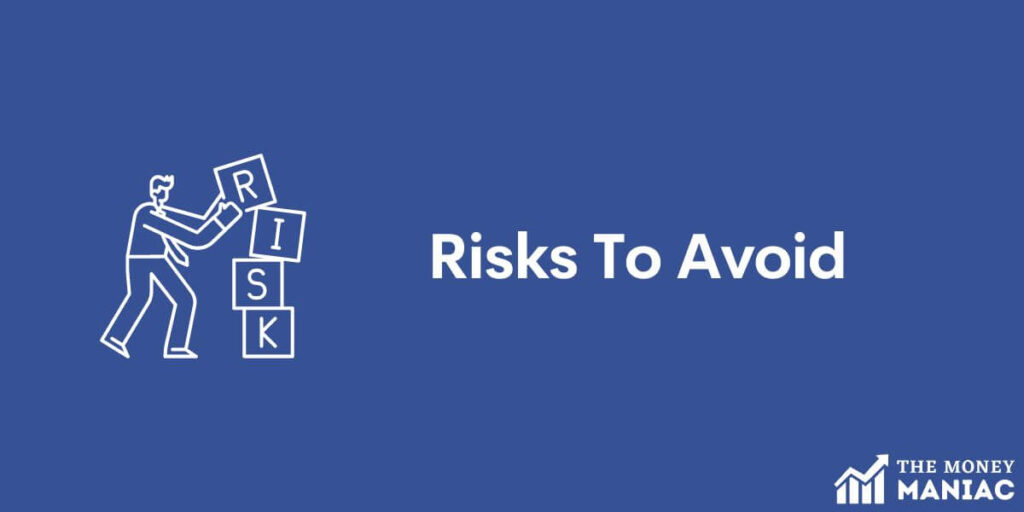If you love the idea of investing in real estate but dread the thought of managing it by yourself, then real estate syndication might be just right for you.
What is real estate syndication? It’s where a group of investors combine their capital to finance a large real estate project with a project sponsor.
Real estate syndication can be a great way to earn passive income from real estate investing, but you have to be able to find and evaluate deals. This article will cover how to do exactly that. Plus, we will highlight key metrics to consider and common hazards to avoid.
Finding Real Estate Syndication Deals

Online platforms
You can get started with real estate syndicate investing via online platforms. A few of the most popular choices are:
These easy-to-use websites feature an attractive selection of syndicates to choose from. What’s equally appealing is that they also have very affordable levels of entry. In some cases, you can start investing with as little as $500 to $1,000.
The platforms listed above are open to both accredited and sophisticated investors. Accredited investors qualify based on their capital, and sophisticated investors qualify based on their experience or expertise.
To be considered an accredited investor, you must meet either the income or net worth test:
- Income test: For each of the past 2 years, your income must have been at least $200,000 ($300,000 including spousal income). Also, you must reasonably expect to earn the same amount during the current year.
- Net worth test: Your net worth, either by yourself or including your spouse, is more than $1,000,000. This does not include the value of your primary residence.
Certain crowdfunding sites also allow non-accredited investors to partake in real estate syndication on a deal-by-deal basis. However, the overall selection is a bit more limited.
Networking and building relationships with sponsors
Sponsor teams usually consist of a real estate developer, property manager, 1 or 2 experienced real estate attorneys, and a handful of investors. These teams love to keep a Rolodex of potential investors lined up for future deals, so never be afraid to reach out and introduce yourself.
Networking is an underrated way to find opportunities for these syndication investments. And it can be done through in-person introductions, referrals, social media, or online forums. One of the most popular forums for building industry connections is BiggerPockets. So if you’re interested in real estate syndication projects, create a free account and start connecting with other investors.
Attending industry events and conferences
Organizations like the National Real Estate Investors Association have chapters nationwide and host events both online and in person. Attending these events and conferences can be a great way to meet sponsors and other investors, learn about the latest trends and investment strategies in the syndication space, and build relationships.
Evaluating Real Estate Syndication Deals

Analyzing the investment structure
The most popular structure in syndication deals is known as the waterfall structure.
This type of structure governs how profits on an investment are allocated to all various parties. You, the passive investor or limited partner (LP), will be issued cash distributions according to a “waterfall” distribution schedule.
LPs are often issued the first 7 to 10 percent return for risking their capital. This is known as the preferred return, or pref for short. Any returns above that cutoff might be split 70/30, 60/40, 50/50, and so on, between the sponsor and the investors. And sometimes, if an even higher hurdle rate is achieved, the sponsors will take a greater percentage of the profits beyond that.
The waterfall structure is designed to limit risk for the passive investor, and provide upside potential to the syndicator who puts together the deal. Investors feel more secure and willing to join syndications because they know that they will get the “first money out.” And the sponsor is motivated to produce great returns in order to maximize their own earnings.
Assessing the location
Understanding the type and class of property that the sponsor offers for investment is important. From multifamily housing to industrial to commercial, you should brush up on the metrics that are used to predict its performance in the local market
Here are a few factors to consider:
- Population and population growth. While a decrease in the population doesn’t necessarily disqualify a project, it should make you more cautious. Look at what’s causing the current population trend, and see if it’s likely to continue. Also, seek out any plans around the community to increase the local population.
- Job growth and diversification. Which industries are experiencing job growth? Does this present new real estate opportunities? Is the growth concentrated in a single industry or employer? To minimize your risk, you generally don’t want to see any one sector represent more than 25 percent of all jobs.
- Affordability of rent. Compare the average rent to the average income. Also, look at the percentage of renters versus owners in the area. Ideally, you want a broad pool of potential renters. But make sure that the property’s expected rent prices are accessible and in demand in the area.
- Supply and demand. Don’t make the mistake of overlooking market dynamics. A growing population and a diverse employment base don’t guarantee success. Other developers may also be building, so there is always the danger of supply outpacing demand. If this happens, you could see slower rent growth or even rent concessions, like giving away the first month’s rent for free.
- Laws and regulations for landlords. Naturally, it’s preferable to invest in areas where the laws are more favorable to landlords. This may not be a deal breaker, but it is worth keeping in mind.
- Other market drivers. Prospective tenants are drawn to safer, more affordable areas that have community amenities. Keep an eye out for supermarkets, schools, high-quality jobs, and transportation.
Understanding the sponsor’s track record and reputation
On the sponsor’s website or in the investment memorandum, you should be able to find the following:
- A track record for you to review
- The number of deals they have closed
- The number of deals they have exited
- The details of each deal they have completed
Ask if they are focused on one type of investment, such as storage buildings or apartment complexes. Specialization likely makes them more experienced and efficient at what they do, which can provide an edge in the market.
Get a feel for the sponsor’s confidence in their investment strategy, and see if they have an “elevator speech” where they can express that strategy in just a few words. Google the syndicator and look for reviews. Find out who they’ve worked with before and contact these partners if you can.
Look for proof of performance, such as a history of improving net operating income (NOI) and returning profits to investors. These historical numbers are much more important than salesmanship. In real estate, it’s better to invest with a conservative expert than an overly ambitious or over-promising amateur.
Make sure that the sponsor is willing to do the following:
- Make themselves available to you
- Answer any questions you may have
- Allow you to tour the property
- Establish an ongoing communication schedule
Educating yourself
In order to conduct due diligence yourself, continue learning the ins and outs of real estate syndication deals. Familiarize yourself with various investment strategies, such as value-add investing, and how to conduct high-level financial analysis.
Consider enrolling in reputable real estate investing (REI) courses. Join investment groups and social media communities. Connect with experienced sponsors and partners. Read industry publications.
Taking these steps will give you a deeper understanding of the market, key trends, and how to be successful as an investor. You will be better equipped to assess investment opportunities, mitigate risks, and make informed decisions that align with your financial goals.
Key Metrics To Consider

Cash-on-cash return (CoC)
Cash-on-cash return refers to the actual income returned in a given period relative to your initial equity investment.
This is usually calculated by dividing the cash flow before tax by your total cash invested.
Cash-on-cash return is expressed as a percentage, with a typical return being in the 7 and 12 percent range.
Internal rate of return (IRR)
The internal rate of return is used to analyze and measure the overall profitability of an investment. The IRR factors in the timing and magnitude of all cash inflows and outflows over the life of the project. And because this includes a potential exit or sale, the IRR should be much higher than the CoC return.
The IRR formula is complex, but the good news is that the IRR function in Excel makes it easier.
Equity multiple
The equity multiple is the amount that your investment will be multiplied over the course of the property’s anticipated hold time. It indicates the total amount of money that you can earn from the capital you invest.
An equity multiple of less than 1 means you’re getting back less than the cash that you invested, while a multiple over 1 means you’re getting back more cash than you invested.
For example, a real estate syndication deal may project a 2.5x equity multiple and a five-year hold time. So if you invest $10,000, you can reasonably expect to receive $25,000 within about 5 years.
Here’s the equity multiple formula:
total cash distribution / total equity invested = equity multiple
In this calculation, the total cash distribution includes all cash flow distributions over the life of the investment as well as proceeds from the eventual sale.
Risks To Avoid

Unrealistic projections
It can be easy to get excited over a potentially lucrative deal, but it’s important to keep a level head and look at things objectively.
One of the most common risks for an investor is a sponsor with unrealistically high expectations. Whether they are overly optimistic or intentionally inflating numbers to entice investors, it spells trouble.
When reviewing projected returns, you should always compare them to other deals in the market. If the sponsor is touting returns that are much higher than comparable opportunities, ask them how they intend to outperform. They could be on to something, but it’s up to you to evaluate that likelihood.
If you don’t like what you see or you get a bad feeling, don’t let anyone smooth-talk you into investing. Just politely pass on the deal and move on to the next one.
Lack of transparency
The sponsor should be available to meet with you directly and answer any questions you have. They should provide straight, no-nonsense answers. And they should openly present their strategy, their insights, and their projected timelines.
Never invest without full information. If you are expected to “trust” the syndicator or rely on “proprietary” information without a clear understanding of the underlying details and risks, walk away.
Hidden fees
Before investing, familiarize yourself with the typical fee schedules associated with real estate syndication deals. Read the offering’s fine print closely, and if any unfamiliar fees pop up, ask for an explanation. If you don’t understand or trust the explanations, consult with an experienced investor or an attorney.
Overleveraging
Leverage, or debt, is a double-edged sword. If used with caution, it can dramatically improve your returns. But if things don’t go right, it can be a train wreck.
If your potential sponsor plans to use short-term or high loan-to-value debt, you should ask why. Because if the property isn’t able to sustain its own debt, the sponsor may turn to investors to help make up the difference.
This is a capital call and it means that investors have to cough up extra capital if they want to maintain their ownership stake. To guard against this possibility, make sure that you are comfortable with the level and type of leverage.
Related reading: How To Legally List Wholesale Deals On The MLS: Ultimate Guide
Final Thoughts
This primer should have given you a better sense of what real estate syndication is, how it works, and how to get started. If you’ve read this far, you are likely ready to take the next steps.
So keep up the momentum! Join online groups and forums for real estate investors. Keep reading to learn more about real estate strategies. And start investigating syndication offerings. Remember, it doesn’t cost anything to have a look.
Then, when you feel comfortable, make a small investment. This will help you learn the ropes and eventually scale up. Best of luck on your real estate investing journey!



